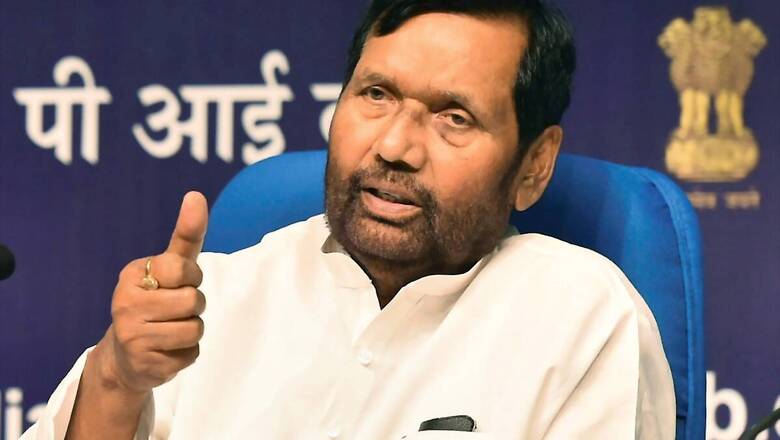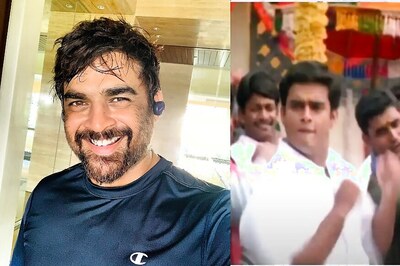
views
Ram Vilas Paswan had friends in all parties. He remained on the right side of the power structure during his five decades in public life. Only once did he fail to clutch the straw in the winds: the 2009 general elections when the Lok Janshakti Party (LJP) and Lalu Yadav ignored the Congress’s plan to fight the Lok Sabha polls in alliance.
But within the paradigm of Dalit and subaltern politics, Paswan’s influence was compartmentalised to a state and a particular sub-caste. Though the Dalit leader from Hajipur burst onto the national scene with a record win much ahead of his contemporaries.
Two Lok Sabha bye-polls, contested in the mid-1980s in fact determined the course of Dalit politics in the heartland and confined Paswan to Bihar.
In 1985, the Congress MP from Bijnor in Western UP, Chowdhry Girdhari Lal, passed away. Bypolls were called. Seeking to rejuvenate the party, Lok Dal of Charan Singh decided to field Ram Vilas Paswan from the seat.
The Congress decided to up the ante. Babu Jagjivan Ram’s daughter Meira Kumar, a career diplomat and foreign services officer, with just 12 years of services under her belt, quit her job. She was nominated to take on Paswan by Rajiv Gandhi.
Bijnor has a high concentration of Dalit-Muslim population, and as such has been the laboratory for many a political experiment. Paswan relied on a Jat-Dalit combination in a bid to register his maiden win outside Bihar.
In a bitterly contested election, Kumar defeated Paswan by a mere three thousand votes.
Interestingly, both the candidates in one of the most high-profile electoral battles in the heart of UP were outsiders, from Bihar. Laster Paswan and Kumar would work as ministers in the Manmohan Singh government between 2004 and 2009.
A couple of years later, in 1987, bye-elections were called for the Haridwar seat in the undivided UP. This constituency also has a high percentage of Muslim and Dalit voters.
Once again Ram Vilas Paswan filed his nomination papers. A then relatively unknown political outfit, going by the name Bahujan Samaj Party, also fielded its nominee. The election was won comfortably by Congress candidate Ram Singh. BSP’s Mayawati stood second with close to one lakh votes, and Paswan came third.
Two years later, Mayawati would register her maiden electoral win from Bijnor. That election also marked the emergence Kanshi Ram as a powerful pan-India Dalit ideologue in post-Independence India. The BSP in the years ahead would go on to dominate Uttar Pradesh politics for two decades and more by stitching together a social coalition of subaltern caste groups.
Kanshi Ram’s tactical modus vivendi juxtaposed with missionary Marxist dialectics helped the BSP develop a nationwide captive vote and influence.
Paswan, however, won the 1989 Lok Sabha polls from Hajipur by more than 5 lakh votes. Paswan’s finest hour in politics perhaps lay embedded in his stint as social justice minister in the VP Singh government. He was the minister who brought in a stringent law to penalise atrocities against the scheduled castes and tribes. Paswan also piloted the executive order for the implementation of the Mandal Commission report, a decision which completely altered the political paradigm in India for decades to come.
Despite his national ambitions, Paswan could since the Janata Dal days and thereafter never really emerge out of Bihar politics. The closest he came to becoming the CM of the state was in February 2005 when his party LJP won more than two dozen seats in a fractured polity. The stalemate continued for a month and more and finally snap polls had to be called.
Within Bihar, Paswan’s influence over his Dalit sub-caste, the Dushad, who constitute about 4% of the population, remained intact. In districts bordering UP, however, the BSP made inroads, especially among the Jatavs. Nitish Kumar walked away with a chunk of Dalit votes by announcing special schemes for the poorest amongst them, also called the Mahadalits.
Nitish Kumar in alliance with the BJP won a comfortable majority. Paswan continued to draw his limited political strength from Bihar, but remained entrenched in national politics. With also the same percentage of caste-base support, Kumar would continue at the helm for 15 years.
Which is why Paswan’s son and political heir Chirag is seeking a larger and a proportionate pie in the state polity for his party.
Read all the Latest News and Breaking News here




















Comments
0 comment